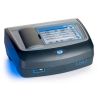Hach Water Hardness TNTplus Vial Test
Features
- Easy and safe handling
- No reagent blank necessary
- Automatic method detection
- Expedited repair and warranty service
- Lifetime technical support
- More
Water Hardness TNTplus chemistry and your Hach spectrophotometer are engineered to simplify water analysis for accurate results, everytime.
For photometric determination of Water Hardness (Calcium + Magnesium) by the Metalphthalein method. Traditional Magnesium measurement has often involved time consuming titrations requiring expensive glassware and subjective end point determination by difficult to see color changes.
With Water Hardness TNTplus reagents, simply add included reagents and sample to the vial, invert to mix, and insert into your Hach spectrophotometer! The Direct Read Technology will provide your Calcium, Magnesium and Water Hardness results to the nearest mg/L! No more cleaning glassware, dealing with large amounts of waste, and worrying about human errors.
Upgrade from traditional titration based methods to TNTplus Water Hardness reagents today! 25 Water Hardness vials per box.
- EPA compliant: N/A
- Instrument: DR3900, DR6000, DR1900, DR2800, DR3800, DR5000
- Method: 10293
- Method Name: Metalphthalein
- Number of tests: 25
- Parameter: Water Hardness
- Platform: TNT plus™
- Range: 20 - 350 mg/L as CaCO₃
5 - 100 mg/L Ca
3 - 50 mg/L Mg - Shelf Life: 12 months from production date
- Special Remarks: 3 parameters within 1 test.
- Storage Conditions: 15 - 25 °C
In The News
Spring 2025 Environmental Monitor Available Now
In the Spring 2025 edition of the Environmental Monitor, we highlight partnerships across the world and the importance of collaboration between government agencies, universities, environmental groups, local communities, and other stakeholders. From great white shark research in Cape Cod to monitoring fisheries in Lake Erie, this latest edition underscores partnerships that connect stakeholders in a watershed through environmental data. With an emphasis on data sharing, a combination of real-time and discrete sampling keeps the public and partners informed of environmental conditions. Our writers also sought out science professionals dedicated to working with peers within and outside of the environmental sector.
Read MoreMonitoring Mariculture in the Gulf of Alaska
The mariculture industry in the Gulf of Alaska has been steadily growing in recent years, guided by ongoing research to help refine farm location and cultivation practices. A subset of aquaculture, mariculture focuses on rearing organisms in the open ocean. In Alaska, finfish farming is illegal, so most farms cultivate kelp, oysters, or a combination of the two. These small, locally operated farms started popping up in the Gulf of Alaska in the early 1990s, when shellfish farming first became legal. Kelp farming did not begin to catch on in the state until 2016. Many of the coastal areas that have grown interested in mariculture are historically commercial fishing communities.
Read MoreSupplying Seattle’s Drinking Water: Using Data Buoys to Monitor the Cedar River Municipal Watershed
Providing clean, safe, and reliable drinking water for the 1.6 million people in the greater Seattle area is a top priority for Seattle Public Utilities (SPU). With limited water supplies, SPU dedicates considerable resources to maintain its watersheds and mountain reservoirs. About 70 percent of Seattle Water comes from the Cedar River Municipal Watershed , and the other 30 percent comes from the South Fork Tolt River Watershed . [caption id="attachment_39574" align="alignnone" width="940"] Data buoy in Chester Morse Lake . (Credit: Kevin Johnson / Seattle Public Utilities) [/caption] Jamie Thompson, a fisheries biologist at SPU, monitors aquatic ecosystems centered on fish listed under the U.S. Endangered Species Act (ESA).
Read More







